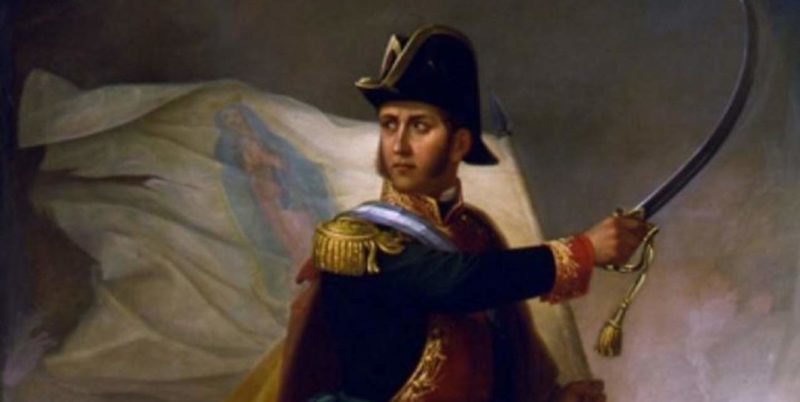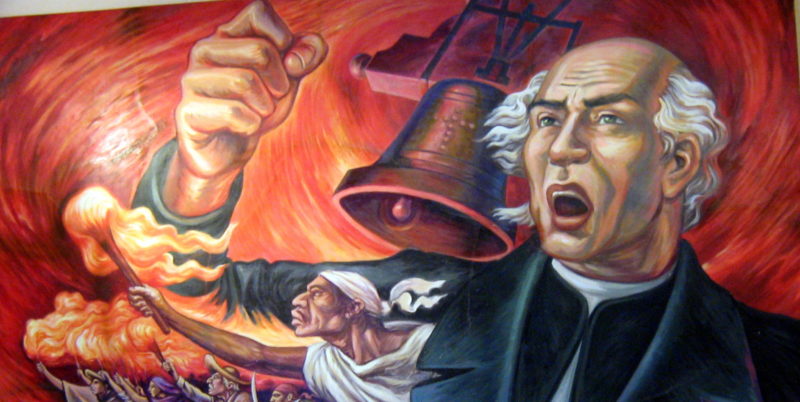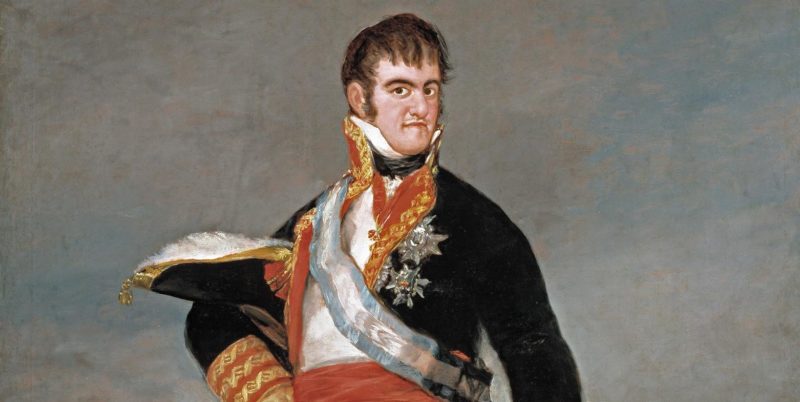We explain what the independence of Mexico was and what its causes and characters were. In addition, its general characteristics and stages.
What was the Independence of Mexico?
The independence of Mexico was an armed movement that began on September 16, 1810 and ended on September 27, 1821. Before independence, the current territory of Mexico was called New Spain, and it was a Spanish colony for 300 years.
This colony flourished thanks to the development of mining , however, at the end of the 18th century it began to enter an economic crisis. It was a rigidly divided society into castes depending on the "race" : the race was defined in degrees, depending on the number of European ancestors, and those of the "purest" European race obtained greater privilege.In this context of discontent, revolts began throughout the territory that were sustained over the course of 11 years, in an increasingly organized manner, achieving their success with the entry of the insurgents to Mexico City .
Internal causes of the independence of Mexico

During colonization , a huge proportion of the indigenous population was murdered or died from the diseases that the Spanish brought with them. It is estimated that at the beginning of the 19th century, there were less than two and a half million indigenous people in New Spain, a figure that represents less than 10% of the indigenous population that existed in the same territory at the time of the arrival of the Europeans. These survivors lived in poverty and had to pay tributes that, since the 18th century, had caused multiple revolts.
Another dissatisfied sector were the Creoles : descendants of Spaniards but born in America , with high economic power thanks to the exercise of commerce . However, when the local economy began to suffer from the administration of the Spanish crown, these sectors suffered. The mestizos , who had also grown economically and politically, nevertheless continued to suffer the inequality marked by the division of castes.
External causes of the independence of Mexico
Spain was suffering the consequences of the wars against England , corruption and epidemics. This external situation affected New Spain since it was the direct cause of the Bourbon reforms that negatively affected the economy of the colony.
On the other hand, from Europe came, along with news of revolutions such as the French Revolution , the ideas of the Enlightenment , which criticized any absolute government , such as the one that ruled in Spain.
Furthermore, thirteen English colonies (in present-day United States territory) had set a precedent by declaring their own independence in 1776.
Mexican Independence Characters

Miguel Hidalgo y Costilla (1753 - 1811). He was a bishop in New Spain and knew some native languages of the region. By ringing the bell of his parish, he began the first fight for the revolution in what was called, the Grito de Dolores. He was shot by the Spanish.
- Ignacio Allende (1769 - 1811). He participated in the capture of Alhóndiga de Granaditas, the Battle of Monte de la Cruces, the capture of Valladolid and the capture of Puente de Calderón. He was executed by the Spanish.
- José María Morelos (1765 - 1815). He participated in the revolts of the south, and was the front of the taking of most of the important cities , including the Site of Cuautla. He organized the first legislative body in Mexico: the Congress of Anáhuac.
- Josefa Ortiz de Domínguez (1768 - 1829). She was one of the organizers of the first independence struggles. Since her husband worked for the crown, she had important information that allowed her to notify the insurgents when they should start the revolts.
Cry of pain

It is the act that started the war of independence , on the morning of September 16, 1810. It was the warning that Miguel Hidal y Costilla gave his parishioners to start the insurrection, through the ringing of bells in his parish, in the city of Dolores.
First stage (1810 - 1811)
In this first stage the revolutionary forces are disorganized and have no clear objectives . The only clear objective was to end the bad government of the Spaniards, but at the same time they exclaimed “alive” to the Spanish King Fernando VII. The main leader of this stage is Miguel Hidalgo y Costilla, who is executed on July 30, 1811.
Second stage (1811 - 1815)

From this moment the forces are concentrated on a clear goal: the independence of Mexico . José María Morelos writes the ideology of this stage, called Sentimientos de la Nación, where in addition to raising the goal of independence, it aims to put an end to inequality and organize a government of the people.
Third stage (1815 - 1821)
Spanish forces weaken the insurgents and fighting continues only in the south . Vicente Guerrero and Francisco Javier Mina are the main figures of this stage.
Fourth stage

In 1812, in Spain, a liberal constitution had been drawn up . In 1821, King Ferdinand VII finally swore the application of it both in the peninsula and in the colonies. The clergy and aristocracy were hurt by this constitution. For this reason, these two sectors, which until now were opposed to independence, began to support it, to prevent these changes in the American territory. In this way, the revolution regained strength and achieved its success in just a few months.
Entry of the Trigarante army into Mexico City
It is called "trigarante" because it guarantees three principles: religion, union and independence . On September 27, 1821, this independence army, led by Agustín de Iturbide, entered Mexico City, without encountering resistance, with which the independence of Mexico was considered consummated.
Iguala Plan

This document was drawn up by Agustín de Iturbide and Vicente Guerrero on February 24, 1821 and published in numerous copies. It was based on four principles:
- Establish the independence of Mexico
- Maintain the monarchy of Fernando VII: that is, Mexico would function as an independent monarchy but founded by Fernando VII
- Establish Catholicism as the only religion in Mexican territory
- Initiate the union of all social classes , suppressing the caste difference
MA student of the TransAtlantic Masters program at UNC-Chapel Hill. Political Science with a focus on European Studies. Expressed ideas are open to revision. He not only covers Technical articles but also has skills in the fields of SEO, graphics, web development and coding. .
Leave a reply
Your email address will not be published. Required fields are marked *Recent post

Sport: What Is It, Types, Risks, Features, Characteristics and Examples

Dogs: Emergence, Features, Characteristics, Feeding and Breeds

Story: Definition, Elements, Structure, Features and Characteristics

